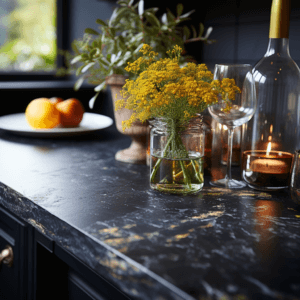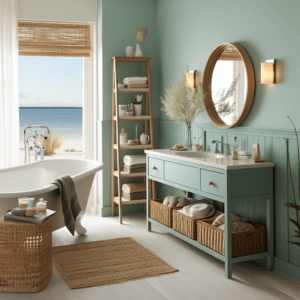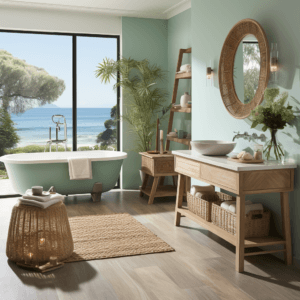Waking up to a cold bathroom on a chilly morning can be an unpleasant experience. However, there are several ways to ensure that your bathroom is warm and comfortable, even on the coldest of mornings. Here are some quick tips for heating your bathroom:
Our guide to bathroom heating options is here to help you avoid the discomfort of stepping out of a cozy shower or bath into a freezing cold bathroom. We explore various heating options such as bathroom radiators, underfloor heating, and traditional radiators, and provide insight into how to calculate the necessary heat for your bathroom based on its size and intended usage. It is important to make your bathroom heating decision early in the design process to avoid potential project delays. With our guide, you’ll be able to select the right heating option to keep your bathroom warm and comfortable.
Choosing the right heating option for your bathroom is an important consideration for both your comfort and your budget. There are several factors to take into account when selecting a bathroom heating solution. The size of your bathroom, for example, will determine the amount of heat required to keep the space warm. A larger bathroom may require a more powerful heating system than a smaller one.
Heating a Bathroom: What Makes it Different from Other Rooms?
When it comes to heating your home, the bathroom requires special attention and consideration for several reasons. Firstly, bathrooms tend to be smaller in size than other rooms, which can make it challenging to find an appropriate heating solution that doesn’t take up too much space. Additionally, bathrooms produce high levels of humidity due to the presence of hot water and steam, which can lead to issues such as dampness and mold growth if not addressed properly. Finally, the fact that people often spend time in bathrooms while partially or fully undressed means that creating a comfortable and warm environment is particularly important.
To avoid the potential risks of dampness and mold growth in your bathroom, it is important to carefully consider your heating options. Underfloor heating is a popular choice for bathrooms, as it provides an even and consistent heat distribution while taking up minimal space. Alternatively, you may opt for a traditional heating solution such as a bathroom radiator, which can be positioned to avoid obstructing windows, doors, or other bathroom fixtures. A heated towel rail is also a practical option that can double as a storage solution for your towels.
Another important consideration is the layout of your bathroom, which will impact your heating choices. If you opt for a traditional heating solution, you’ll need to consider the best location for your heat source to avoid any potential clashes with windows, doors, mirrors, or sanitaryware. You may also want to consider the use of additional bathroom accessories such as a bathroom extractor fan or a dehumidifier to help manage humidity levels and improve ventilation.
Bathroom Heating Options Explained
There are several different types of bathroom heating, some of which can be run off your central heating system, others that use the mains electricity supply. The main reason people choose to run their bathroom heating via the electricity supply is so that it can remain warm even in the summer months when the central heating is likely to be turned off.
In general, when looking at heating a bathroom you will come across these main options:
- Heated towel rails
- Radiators
- Underfloor Heating
- Fan heaters
Does radiator size matter?
To ensure that your bathroom remains comfortable throughout the year, it is important to select a heating source that emits the right amount of heat. One useful tool for determining this is a BTU calculator. BTU, which stands for British Thermal Units, is a measurement of the amount of heat that a source emits. Many free online BTU calculators are available that take into account various factors such as room size, window type and location, ceiling height, and more.
Ensuring Bathroom Safety: Understanding the Different Bathroom Zones
The bathroom is a space that requires special attention when it comes to electrical safety. To ensure the safe use of electrical fittings in the bathroom, the space is divided into four separate zones. These zones are based on the level of risk of water coming into contact with an electrical supply, and each zone dictates the type of fitting that can be installed within it. It is essential to consider these zones when selecting electrical fittings and lighting for your bathroom.
Zone 0 is the area inside the bath or shower itself. For safety reasons, no electrical fittings are permitted in this zone.
Zone 1 is the space directly above the shower or bath, extending to a height of 2.25m from the floor. In this zone, only fittings that are specifically designed for use in wet conditions, such as IP rated lights, can be installed.
Zone 2 extends 0.6m outside the perimeter of the bath or shower and 2.25m from the floor. In this zone, only fittings that have a minimum rating of IPX4 are permitted. This includes fittings such as shaver sockets and non-waterproof lights.
Beyond Zones 0, 1, and 2, there is an area outside of these zones where no water jets will be employed. In this area, only fittings with a minimum rating of IPX1 can be installed.
It is important to carefully consider these zones when selecting electrical fittings and lighting for your bathroom. By choosing the appropriate fittings for each zone, you can ensure the safety of yourself and others when using your bathroom. Additionally, it is crucial to have a qualified electrician install all electrical fittings in your bathroom to ensure they are correctly installed and safe to use.
Heated Towel Rails as Bathroom Heating Solutions
Heated towel rails are a popular choice for bathroom heating solutions. In addition to their practical function of providing a place to hang and dry wet towels and robes, they can also serve as an effective heat source for your bathroom. However, the question remains: is a heated towel rail enough to heat a bathroom?
The answer to this question depends on the size of your bathroom and the output of your heated towel rail. If you choose a towel rail with the correct BTU output for your space, it can provide sufficient heat to warm up a smaller bathroom. However, larger bathrooms may require an additional heat source, such as underfloor heating, in addition to a heated towel rail as they tend to spot heat.
It is important to note that not all heated towel rails are created equal. There are numerous styles and models available, ranging from tall, narrow designs that are suitable for smaller bathrooms, to long horizontal models that can hold multiple towels. It is crucial to select a heated towel rail with an appropriate BTU output for your bathroom size to ensure that it provides sufficient heat.
Electric Bathroom Heaters
There are several types of bathroom heater that rely on electricity. Electric towel warmers are a popular option that can remain on all year round, even when the central heating is off.
Fan heaters are another option — they are operated much like an extractor fan with a simple wall switch. While they are good for a quick blast of heat on a chilly morning, the don’t retain heat and can be expensive to run.

The Advantages and Types of Underfloor Heating for Bathrooms”
Underfloor heating has become an increasingly popular choice for bathroom heating solutions. It offers many benefits, such as keeping bare feet warm, drying wet floors quickly, and eliminating the need for wall or floor space for a traditional radiator. This makes it an ideal option for bathrooms of all sizes and shapes.
Larger bathrooms, in particular, can greatly benefit from underfloor heating. A single towel warmer is often insufficient to provide adequate heating to the space, especially when covered in towels. With underfloor heating, the entire floor area can be used for heating, ensuring that the entire bathroom remains comfortably warm.
There are two main types of underfloor heating systems: dry and wet. Dry underfloor heating uses electrical wiring, making it a less disruptive option for retrofitting into an existing bathroom. On the other hand, wet underfloor heating involves a series of pipes that are run within the floor and heated via hot water. This type of system is best installed during a bathroom renovation or self-build project.
Many people who opt for underfloor heating in their bathrooms also choose to install a towel warmer. This is because underfloor heating can take some time to warm up, while a towel warmer provides immediate heat to keep towels and the bathroom warm and cozy. Ultimately, whether you choose to install a dry or wet underfloor heating system, the benefits of this heating solution will ensure that your bathroom remains warm and inviting for many years to come.
Comparing Bathroom Heating Options: Towel Warmers, Fan Heaters, and Underfloor Heating
When it comes to bathroom heating solutions, there are various options to choose from, including towel warmers, fan heaters, and underfloor heating. Each option has its pros and cons, and the right choice will depend on your budget, heating needs, and personal preferences.
Towel warmers and fan heaters are generally less expensive to purchase and install than underfloor heating. These options provide immediate heat and can be conveniently placed in different locations within the bathroom. However, while these options may seem attractive initially, they may not be the most efficient way of heating your bathroom in the long term.
In contrast, underfloor heating tends to be more efficient when viewed long term. It operates at lower temperatures, requiring less energy and reducing energy costs over time. Moreover, underfloor heating distributes heat evenly across the entire floor, providing consistent warmth throughout the bathroom. This can be particularly beneficial for larger bathrooms where traditional heating sources may struggle to provide adequate heat distribution.
While underfloor heating may require a larger initial investment than other bathroom heating options, its efficiency and effectiveness in the long term make it a popular choice among homeowners. Additionally, if you are already undergoing a bathroom renovation, installing underfloor heating may be a more practical option as it can be easily integrated into the design.
In conclusion, when choosing the best bathroom heating option, it is essential to consider factors such as budget, heating needs, and personal preferences. While towel warmers and fan heaters may be cheaper initially, underfloor heating can provide more efficient heating in the long term and distribute heat more evenly, making it a practical and comfortable choice for your bathroom.







